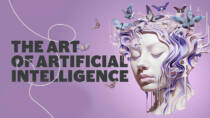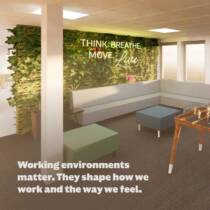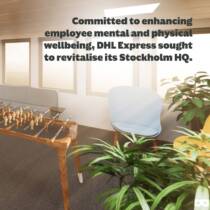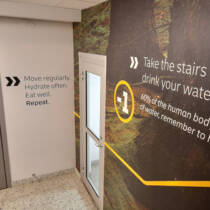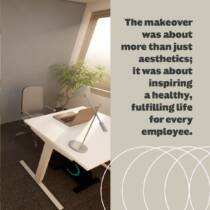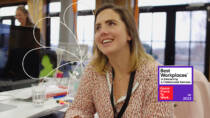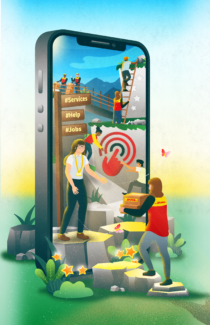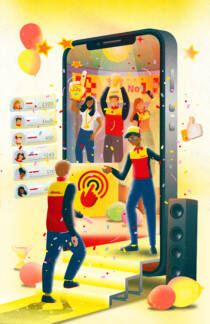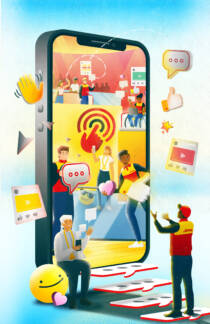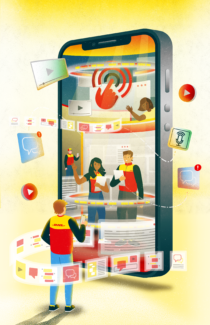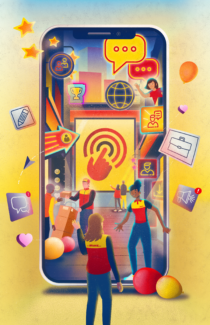Navigating AI together: AI policy insights, exploring AI-assisted video and MidJourney platform review
By Sally Pritchett
CEO
We are bringing communicators together to navigate the ever-changing landscape of AI. Here, we share essential insights from our second 'Navigating AI Together' roundtable.
Some view AI as a tool for enhancing productivity, while others are understandably expressing concerns about its impact on jobs and the value of creative and communication skills. Recognising these concerns among our network of communication professionals, we’ve established a safe space for collaborative learning about AI and its ethical, responsible usage. Our commitment is to empower our community to embrace AI positively and with an open mind as we collectively explore its potential.
In our second ‘Navigating AI Together’ roundtable held in September, we delved into AI policies and governance, AI-assisted video creation, and shared our review of the generative AI tool Midjourney. One significant takeaway from the discussion was that while AI may boost productivity, it isn’t necessarily reducing workloads; it simply reshapes it.
For insights from our first roundtable, check out the write-up here, where we explored how communications influences workplace culture, employee experience, productivity, sales, customer service, and innovation.
AI insights: policies and governance
We were pleased to be joined by marketing expert, Danny Philamond, from fellow B Corp business, Magnus Consulting. Danny has been advising clients on AI usage, and during our discussion, he shed light on the importance of creating AI policies and governance.
Potential risks of AI:
When considering risks, we focused on marketing and communications:
- Sharing confidential data with third parties poses a significant risk. For example, OpenAI (the creators of ChatGPT) say within their terms of service that they may share data with their vendors (which is potentially up to 80 plugins as of writing). Anything you share with an AI tool has a potentially massive reach. However, within ChatGPT for example you can look to limit this extension by deselecting chat history and training, reducing your data transfer.
- When using an AI tool, think about whether you would want the information to be made public.
- Even if information isn’t strictly confidential, it might still be privileged. Consider whether you’d want AI to learn your product strategies, and potentially share that insight with competitors.
- If you’re using your knowledge and experience to refine AI outputs, and then feeding those back into the model, you’re enabling your unique insights to train the AI. Is that something you want to freely share?
Guidance for advising teams and suppliers:
Emphasise responsible usage:
- Individual accountability is crucial, as policies can’t cover every AI use, given the rapid evolution of the field.
- Maintain transparency, indicating when content is AI-generated.
- Integrate AI usage, accountability, and transparency into your due diligence processes.
Brands and transparency:
- Nearly three-quarters of consumers believe that brands should disclose the use of AI-generated content, according to a recent IPA study. Currently, it’s up to brands to decide on transparency.
- Some AI companies, including OpenAI, Alphabet, and Meta, have made voluntary commitments to watermark AI-generated content, which could become enforced regulation.
- Consider the impact of transparency: imagine if Photoshop or Instagram filters were required to disclose image alterations when they first became popular. Such transparency could have positively affected the growing challenges we’re seeing around self-esteem and mental health. We have the opportunity, and perhaps the moral responsibility, to be transparent about AI-generated content.
Break down company-wide AI policies:
- Build flexibility into policies, as the AI landscape evolves rapidly. Plan regular policy reviews.
- Provide training on the guidelines, ensuring everyone understands AI terminology and limitations.
- Support teams in utilising AI tools for efficiency while managing associated risks.
Recommendations for AI policies and guidelines:
As a starting point, all policies should consider:
- User accountability and responsible usage.
- Best practices for effective AI usage.
- Safe AI usage.
- Activity to avoid and risk factors.
- Data handling and protection.
- Compliance and governance.
- Training and feedback loops.
AI use case: Exploring AI-assisted video creation
During the previous session, we found that the vast number of AI tools and opportunities was overwhelming to many communicators, and so during this session, we turned our focus to just one potential use case: AI-assisted video creation. We shared an example of an AI-assisted video that we would be able to produce for clients, using the example of translating an employee policy handbook into a digestible animation (please get in touch if you’d be interested in watching this video and finding out more about the process involved). These videos can be quick to create, have the potential to be considerably more affordable than traditional video, be translated into multiple languages and can bring inaccessible documents to life.
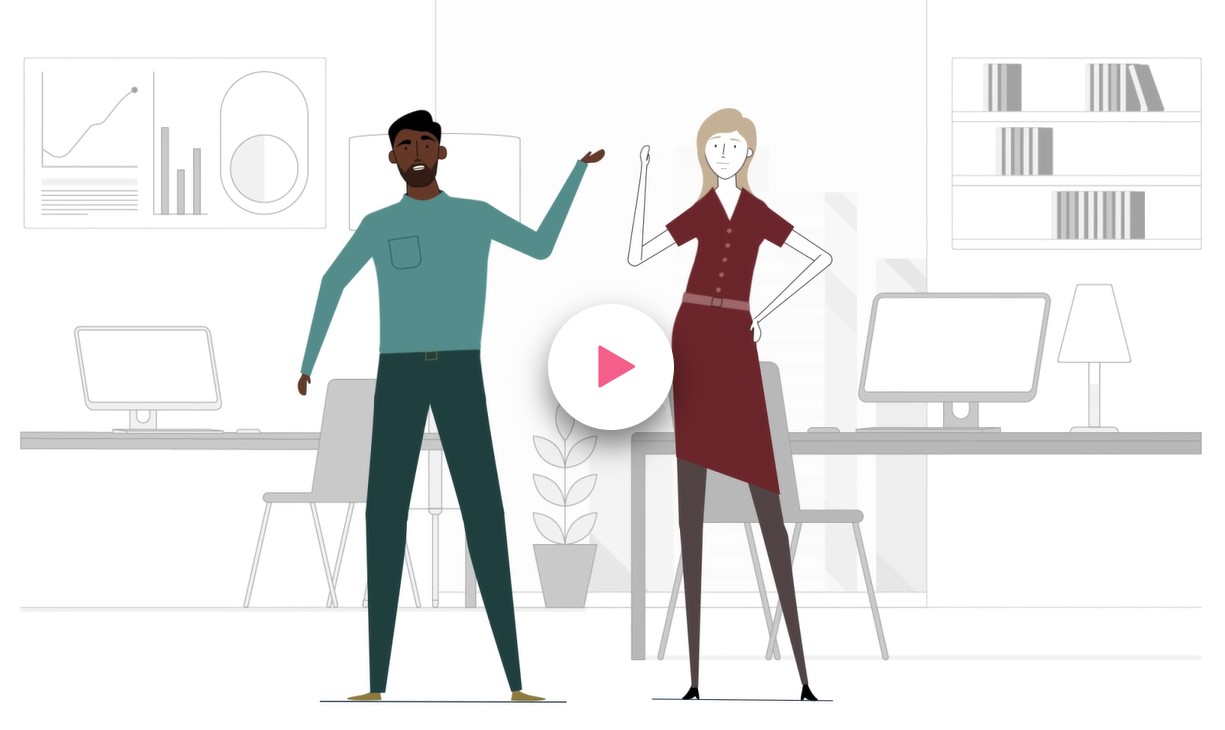
After viewing the video, our group identified that AI-assisted video creation can be a solution for communication projects that often receive limited attention and budget, such as:
External communications:
- Product descriptions
- Platform demos
- Customs advice
- Product or service specifications
- Regulatory advice
Internal communications:
- Health and safety materials
- Employee handbooks
- Systems training
- Onboarding documents
- Policy materials
AI platform review: Midjourney
Midjourney is a generative AI program and service that produces images from natural language descriptions (called prompts). After submitting a prompt, Midjourney generates four different images, which you can then edit, or tailor your prompt to refine the concepts. Midjourney can create any style of image you can think of. Within our Midjourney platform review, we cover how to use it, subscriptions and licensing, prompt writing, and the pros and cons of using the platform from a communications perspective. You can download the full platform review here.
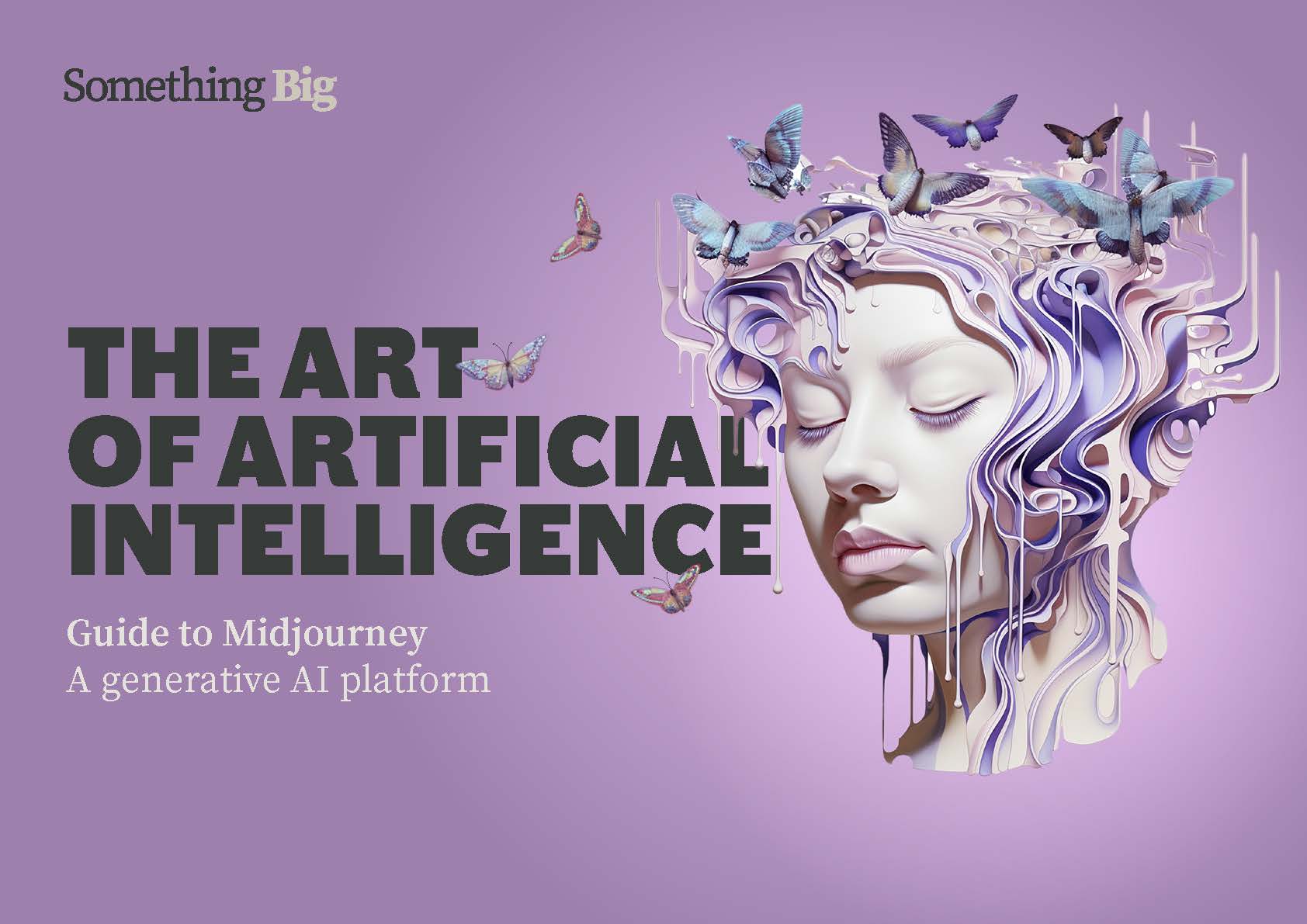
Navigating AI together: overcoming bias and achieving inclusion
In our next session we will examine the issue of the biases embedded in AI and explore how we can mitigate this bias and harness AI tools to foster greater inclusion and authentic representation.
The art of AI: Midjourney guide and review
By Sally Pritchett
CEO
Download our free Midjourney guide and review.
Are you considering if Midjourney could be the right platform for you? Our creative team have put the AI tool to the test. Within this free guide we cover:
- How to use Midjourney
- Subscriptions and licensing
- Prompt writing
- The pros and cons from a communications perspective
What is Midjourney?
Midjourney is a generative artificial intelligence program and service. It generates images from natural language descriptions, called “prompts”. After submitting a prompt Midjourney will generate four different images to choose from, at which point you can then edit or tailor your prompt to refine your concept. From illustration to hyper-realism, Picasso to pixel art, Midjourney can create any style of image you can think of and a whole world you haven’t.
Is Midjourney for commercial use?
All Midjourney subscriptions and plans have general commercial terms, meaning outputs can be used as you wish, but they’re not exclusively yours. Images can be used and modified by other users within the Discord community. Essentially everything you create with Midjourney can be used by Midjourney and anyone else as well. You can’t copyright an image either.
Want to find out about how Midjourney could impact your communications? Get in touch.
Download your free guide to Midjourney
Inspiring wellbeing with workplace design
By Sally Pritchett
CEO
Discover how to create a working environment that promotes employee health and wellbeing.
Working environments matter. They shape how we work and the way we feel. If organisations want to attract and retain talent, then a thoughtfully designed workspace can help improve the employee experience.
By designing an office space with wellbeing in mind, you can lay the foundation for a thriving, engaged and fulfilled workforce. Natural plants and lighting are shown to reduce stress levels, and different types of spaces can help foster creativity and collaboration.
People-first workspaces demonstrate a company’s commitment to the health and wellbeing of their employees. But how can you elevate a functional workspace into something much more?
Case study: Enhancing employee wellbeing for DHL Express in Stockholm
Committed to enhancing employee mental and physical wellbeing, DHL Express wanted to revitalise its Stockholm HQ. This office makeover was about more than just aesthetics; it was about inspiring a healthy, fulfilling life for every employee.
We were tasked with making wellbeing an integral part of the workspace. They wanted a welcoming, human-centric work environment that had wellness woven into the very fabric of the building.
Creating a hub for employee wellbeing
So, how did we go about turning a workplace into a wellbeing hub?
1. Design for wellbeing
We crafted designs for 25 spaces, integrating calming elements like wellbeing messaging, wall designs, foliage, artwork and natural wood furnishings.
2. Nature’s boost
We ensured that natural light and greenery flooded the spaces, positively impacting physical and mental wellbeing by bringing the outside in.
3. Motivational messaging
We included motivational messages that were meaningful, respectful and significant, relating to DHL’s brand heritage or to health and wellbeing.
5. Cultural fusion
We brought the local culture alive through room themes and art, fostering unity and a strong sense of belonging among employees.
The Sweden HQ was transformed into a welcoming workspace that everyone could thrive in. By prioritising wellbeing, DHL Express recognised that they could help employees feel happier, healthier, and more motivated than ever before.
Let’s talk about turning your workspace into a hub for wellbeing.
We're one of UK’s Best Workplaces in Consulting & Professional Services
By Sally Pritchett
CEO
As a creative communications agency, we've always put our people at the heart of our success, and this recognition underlines our strong commitment to creating a positive and thriving workplace culture.
We’re excited to share some fantastic news: Something Big has earned a spot in the respected UK’s Best Workplaces in Consulting & Professional Services™ list by Great Place to Work®. In the world of professional services, every interaction our team has with our clients, every project they complete, and every deadline they meet, contributes to our success. Our approach has always been simple but powerful: when our team feel happy, respected, psychologically safe and connected to our purpose, our creative is powerful, our clients succeed, and our business flourishes.
What is the UK’s Best Workplaces in Consulting & Professional Services list?
The UK’s Best Workplaces in Consulting & Professional Services™ list encompasses a broad range of knowledge-intensive roles, from legal services to management consultancy, engineering, marketing and advertising, telecoms, real estate, recruitment, travel management and more. It showcases the rich diversity of talents driving the industry forward.
The Best Workplaces in Consulting and Professional Services™ list is created using anonymous feedback from employees working in the industry about their workplace experience. The surveys asked employees to comment on how their company supports their work-life balance, sense of fulfilment, job satisfaction, psychological safety and financial security. Evaluations also included an assessment of how well the organisation was able to deliver consistency of their employee experience across all departments and seniority levels.
Benedict Gautrey, Managing Director of Great Place To Work® UK said: “While navigating this ever-changing landscape, the Best Workplaces in Consulting & Professional Services have galvanised their people proposition by placing employee wellbeing at the forefront of their company cultures – and enjoyed better business performance and staff retention as a result. It’s great to see so many examples of organisations making their workplaces truly ‘great’.”
Our commitment to our culture
At Something Big, nurturing a thriving workplace culture is vital to the success of our business. This belief has been embedded in our values for 25 years, and now, as an employee-owned certified B Corp, our dedication to our people is stronger than ever. To discover how we maintain an outstanding culture for our business’s success, check out our CEO’s article.
Join us on this journey
If you’re on a mission to foster a positive workplace culture and are looking for a creative communications agency that not only partners with one of the World’s Best Workplaces™, but also lives and breathes those principles within its own team, we’d love to hear from you.
Reaching the frontline: How to engage hard-to-reach employees
By Sally Pritchett
CEO
Discover how to effectively engage hard-to-reach employees with inclusive internal communications.
Accessible and inclusive internal communications play a key part in creating and maintaining a thriving workforce. But when it comes to large, multi-level organisations, how do you communicate to such a wide and varied audience?
Frontline workers in particular pose a unique challenge as, by the very nature of their active job role, they are usually the hardest to reach. Without access to a laptop or sometimes even a work email account, it’s a challenge to ensure these employees are receiving important messages and are aligned with company values.
And although being away from a desk can have plenty of benefits, it’s these frontline workers who could benefit the most from inclusive communications. By reaching these employees, we can help them avoid any feelings of isolation or disconnectedness from the business while they are out on the frontline.
So, what is the best way to reach every employee, even those that are hard-to-reach? Clear and accessible communications, cutting through the noise and using a wide range of channels are just a few ways we can make sure our messages are engaging the whole workforce.
Case study: Launching a global employee app for DHL Express
DHL Express asked us to help them launch Smart Connect – an internal employee app and social intranet for DHL employees to help manage their work and stay connected. The aim of the app was to connect all 120k employees, providing news, HR services and info pages.
They explained that uptake of a previous internal app had been low, so it was important to get this launch right so the new app didn’t suffer the same fate.
We needed to be able to engage a diverse range of employees – across borders, language barriers and hugely different roles. It was also important that people felt confident to download the app onto their own personal devices, as many frontline workers didn’t have access to a work computer.
The client had also found that although DHL Express has a strong and consistent brand identity, this wasn’t always resonating with employees for internal communications.
Our approach to engaging hard-to-reach employees
So, how did we go about grabbing the attention of thousands of employees across offices, service centres, and out on the frontline?
-
We gathered employee feedback
We wanted to understand the barriers to adoption, the challenges of reaching the workforce and what would capture DHL employees’ attention.
-
We dived deep into the app experience
Training calls helped us better understand the app’s key features. This meant we could focus the campaign on areas that would have the biggest impact on employee experience.
-
We stepped away from the norm
By using bespoke and attention-grabbing illustrations, we ensured the launch would have cut-through amongst other internal communications.
-
We created a ‘portal to possibility’
We positioned the employee’s phone as the doorway into the world of DHL Express. Bright and energetic depictions of employees interacting with messages and pages leapt out of the phone, larger than life.
-
We used a wide variety of comms channels
With highly diverse employees based all over the world, we rolled out the campaign across a variety of channels including posters, internal TV screens and roadshows. We knew we had to make the comms as engaging and accessible as possible to be able to reach everyone across the business.
By working closely with the DHL Express team, we were able to successfully roll out the ‘A portal to possibility’ campaign. The innovative approach combined with accessible content captivated employees, surpassed prior downloads and engaged all regions and roles.
Let’s talk to see how we can help you create highly inclusive and human-centric campaigns that engage hard-to-reach employees.



